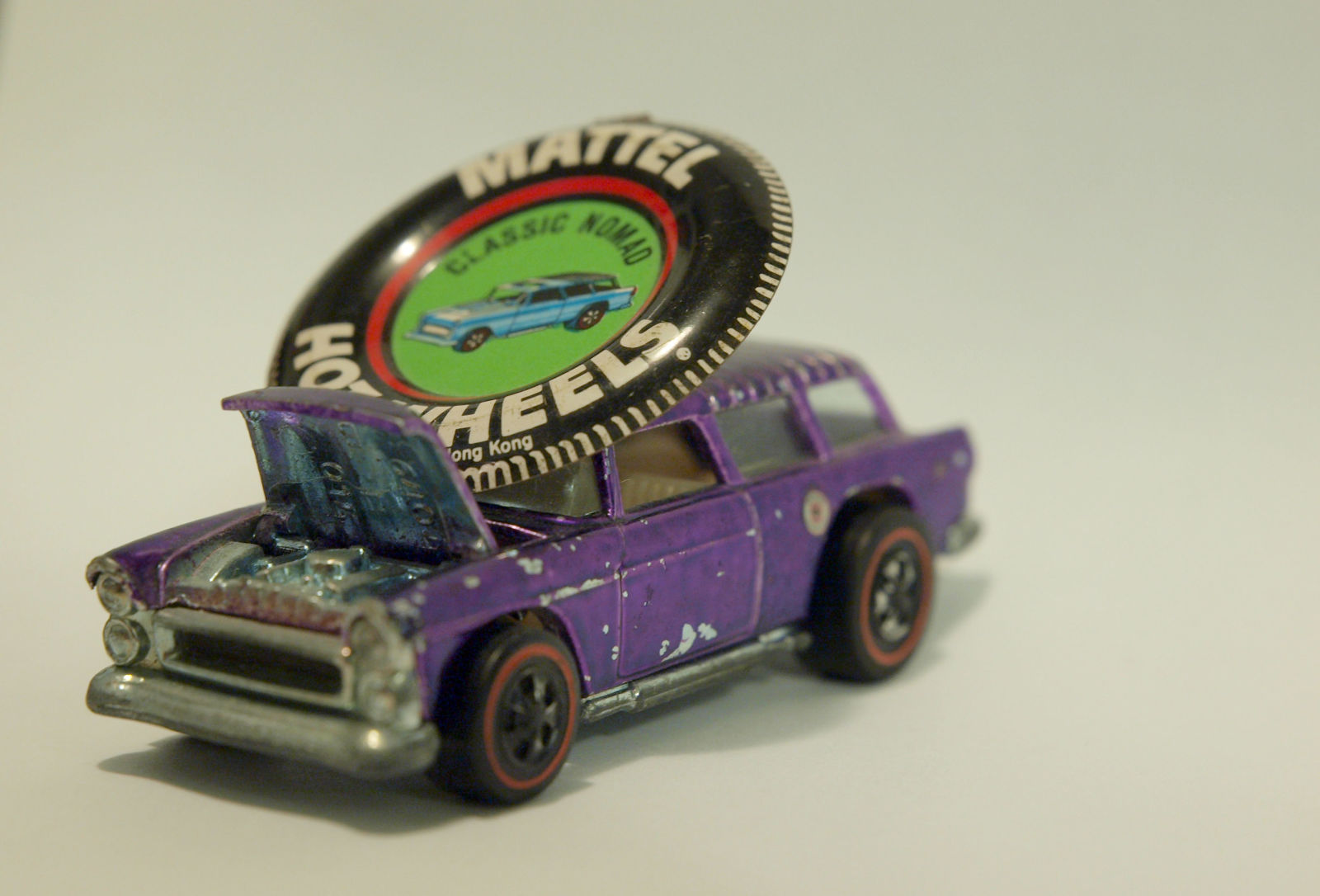So today I am going to run-through the famous Red Line era that started the phenomenon we call hot wheels today.
Let's start from the beginning. Back in the '60s Mattel wanted to start running a toy car line. Corgi, Matchbox, and Tootsietoy had already been releasing cars and Mattel wanted to compete. The competition had been releasing cars mainly found in europe which most people in the USA couldn't recognize and the cars didn't roll too well. Mattel wanted to come out with something that blew the competition away. Enter Hot Wheels.
Mattel had three goals with Hot Wheels: create highly recognizable vehicles to harken to the current muscle-car era, use bright colors to draw kids in, and make them a lot faster than the rest.
I think we can all agree Hot Wheels nailed it.
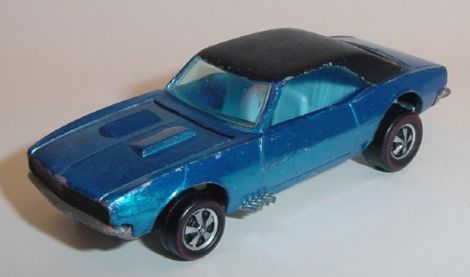
(Custom Camaro from the original sweet 16 - 1968, courtesy of onlineredlineguide.com)
There are a few things quite distinct with the original redlines. First let's talk paint. The original Redlines used what is referred to as a spectraflame paint job. Click the link to learn more about that in a post I did a while back.
Essentially, spectraflame was a lacquer painted over the polished zinc-plated body, giving it that famous shine. Next we have the wheels, the reason why Hot Wheels went with a red line around the tire? To give it the same vibe as the muscle cars of the day which used red-line tires.
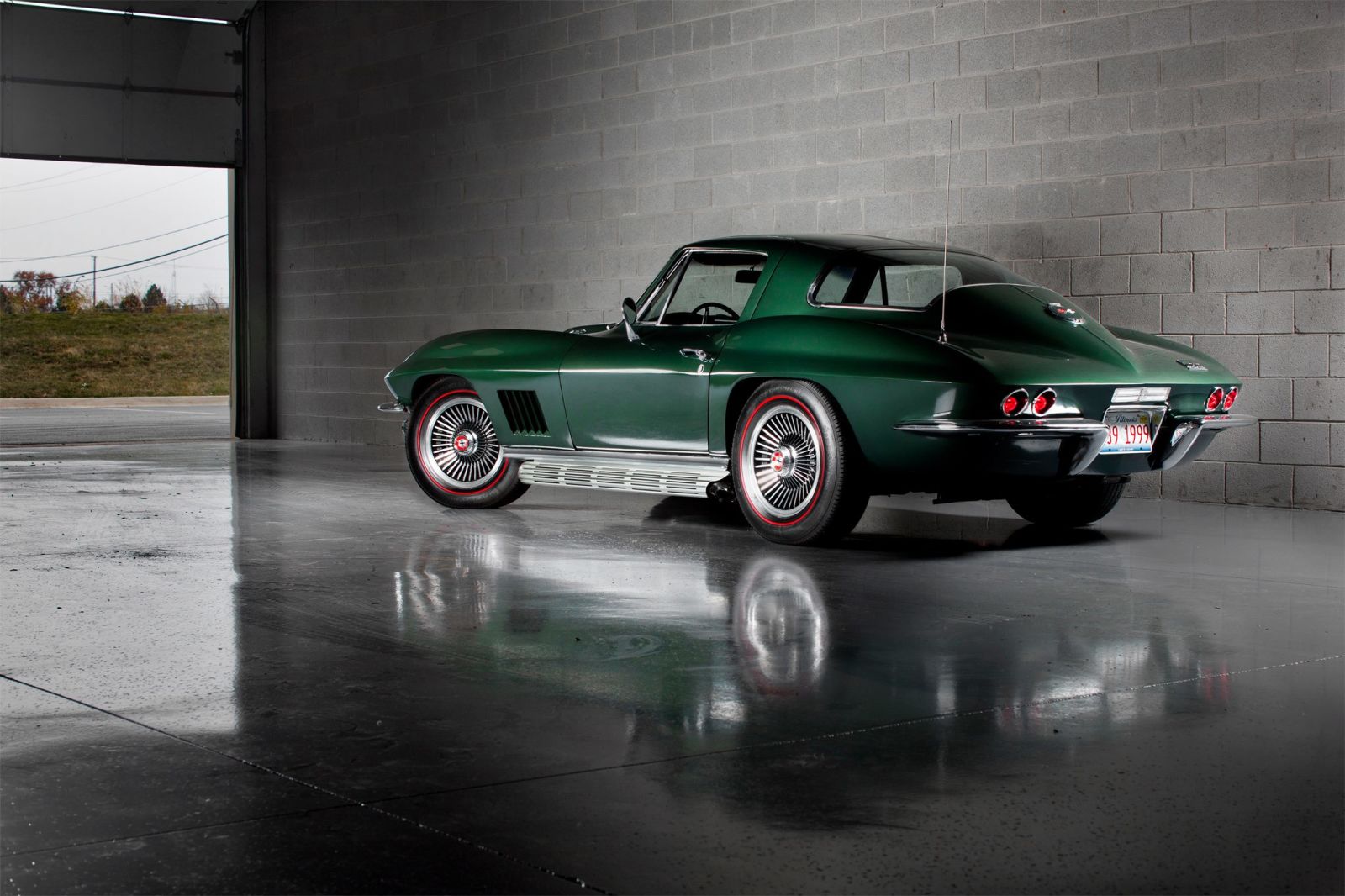
Now these wheels allowed the toy cars to travel with very low friction, letting them be much faster than the competition. I dunno about you guys, but I raced my hot wheels as a kid against the neighbor kids. Whoever had the fastest car definitely had the most street cred. To top off the wheels and paint, hot wheels went straight to cool, most of their cars were modeled off muscle cars or race cars, where the rest were designed off other cool cars of the time, or cool fantasies. One of my favorites is the Deora. Love it, and it's super cool.
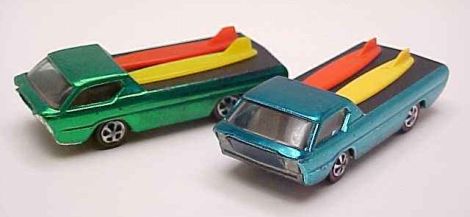
(Courtesy of onlineredlineguide.com)
So that's gives you an idea for what Hot Wheels was meant to be when it was released, let's go into some details now.
Now as collectors, it's good for us to know what we are looking at. Let's start with production locations. Most of us know that modern hot wheels are made in Malaysia or Thailand, but the first production models were made in Hong Kong and the good 'ol US of A. This is an important thing to check when collecting. Hot Wheels still releases specials with Redlines and a lot of the original models haven't changed much over the years, a quick and easy check is to look at the manufacturer location on the bottom. Also note that that year has nothing to do with the release date, that is simply the copyright date, hence if you find a shelby cobra, it will have a 1981 on the bottom of it even though it could have been produced last year.
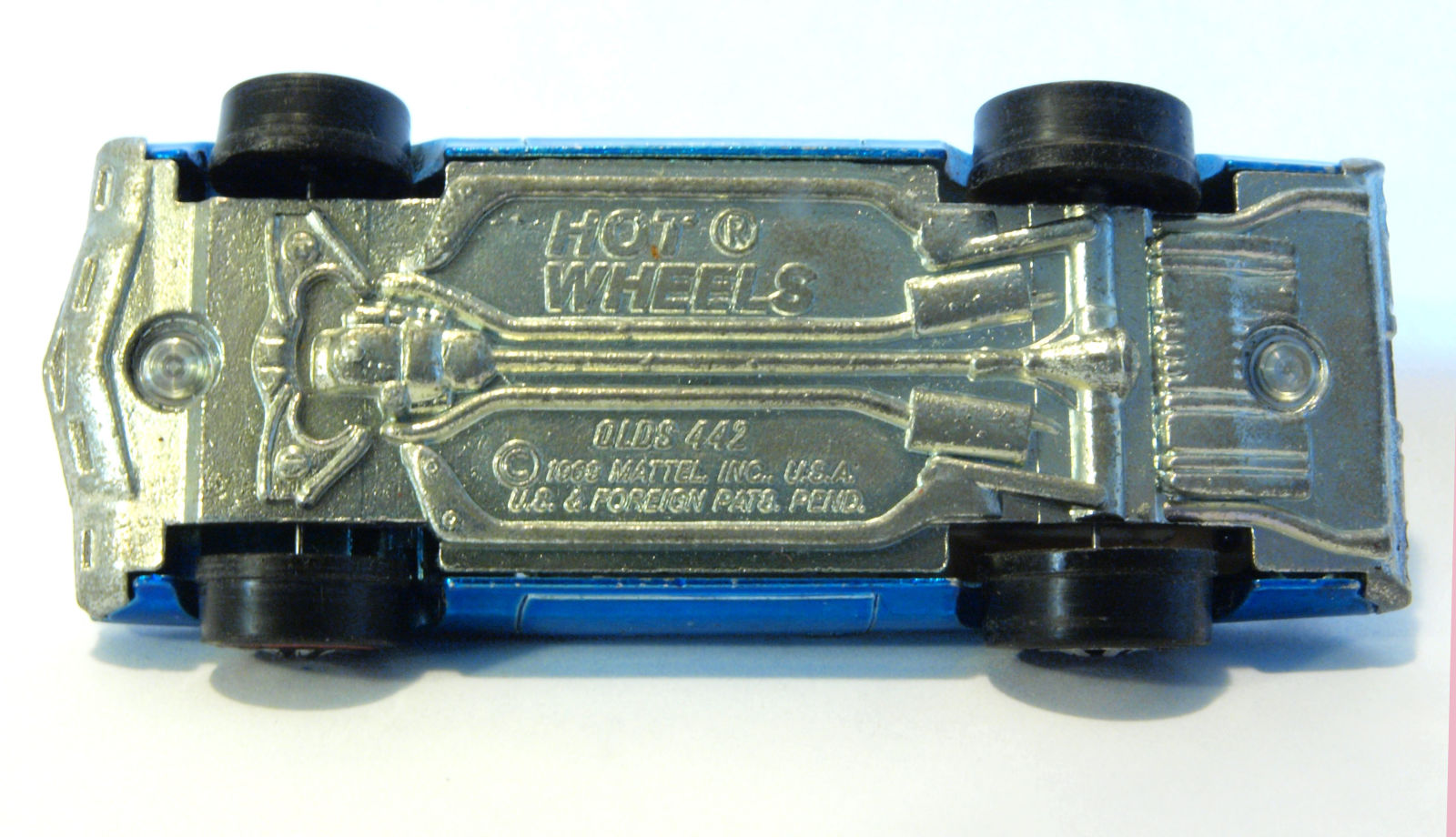
Here's an Olds 442 made in the USA (fun fact, the 1970 442 was ONLY made in the USA and is quite collectible...more on that in a bit)
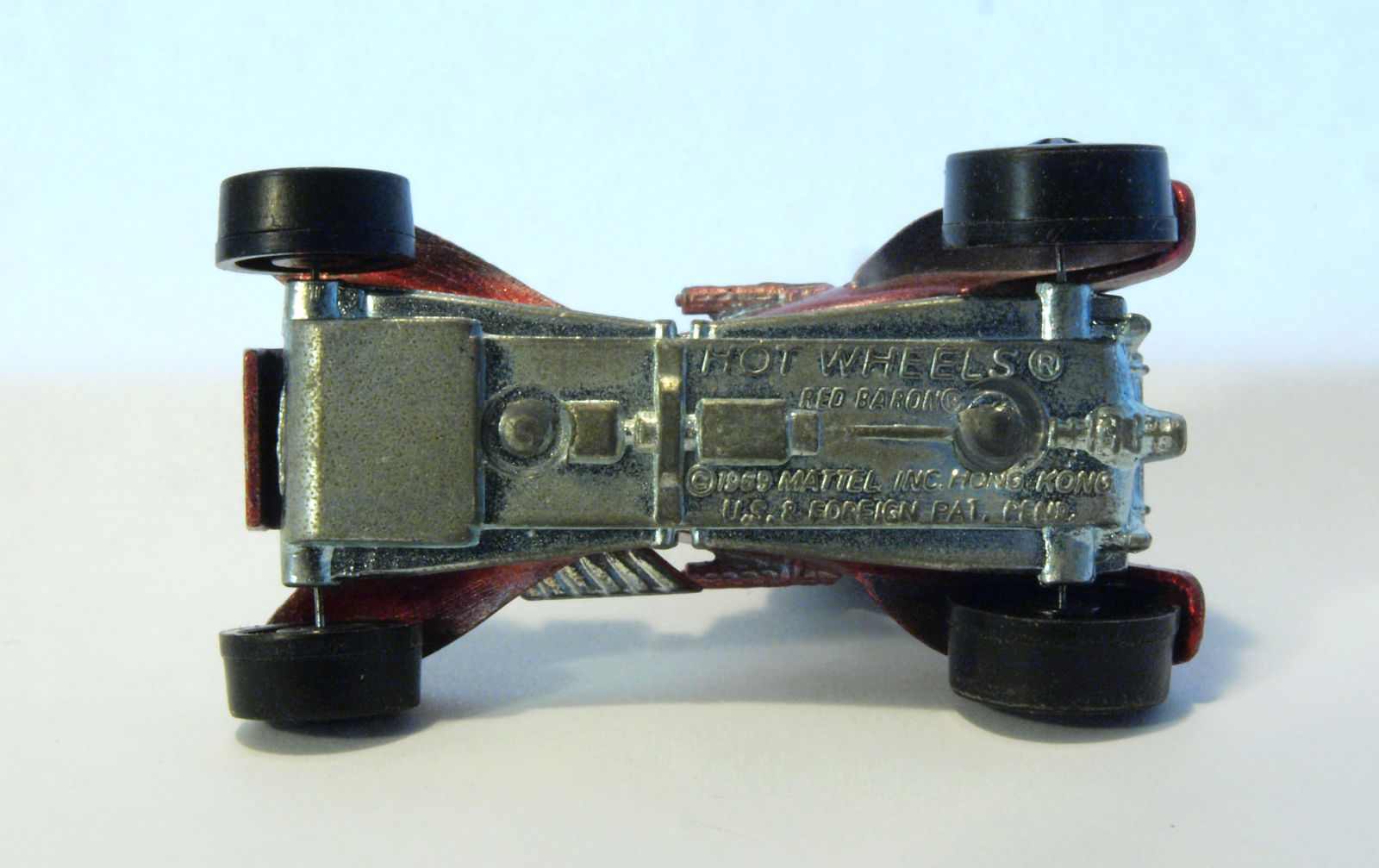
And here's a Red Baron from Hong Kong (you'll see people refer to Hong Kong as HK frequently).
Another thing to check on is the paint on the originals, back in the day, their quality wasn't necessarily as high, so you'll get what's essentially patina from the zinc plating under the paint.
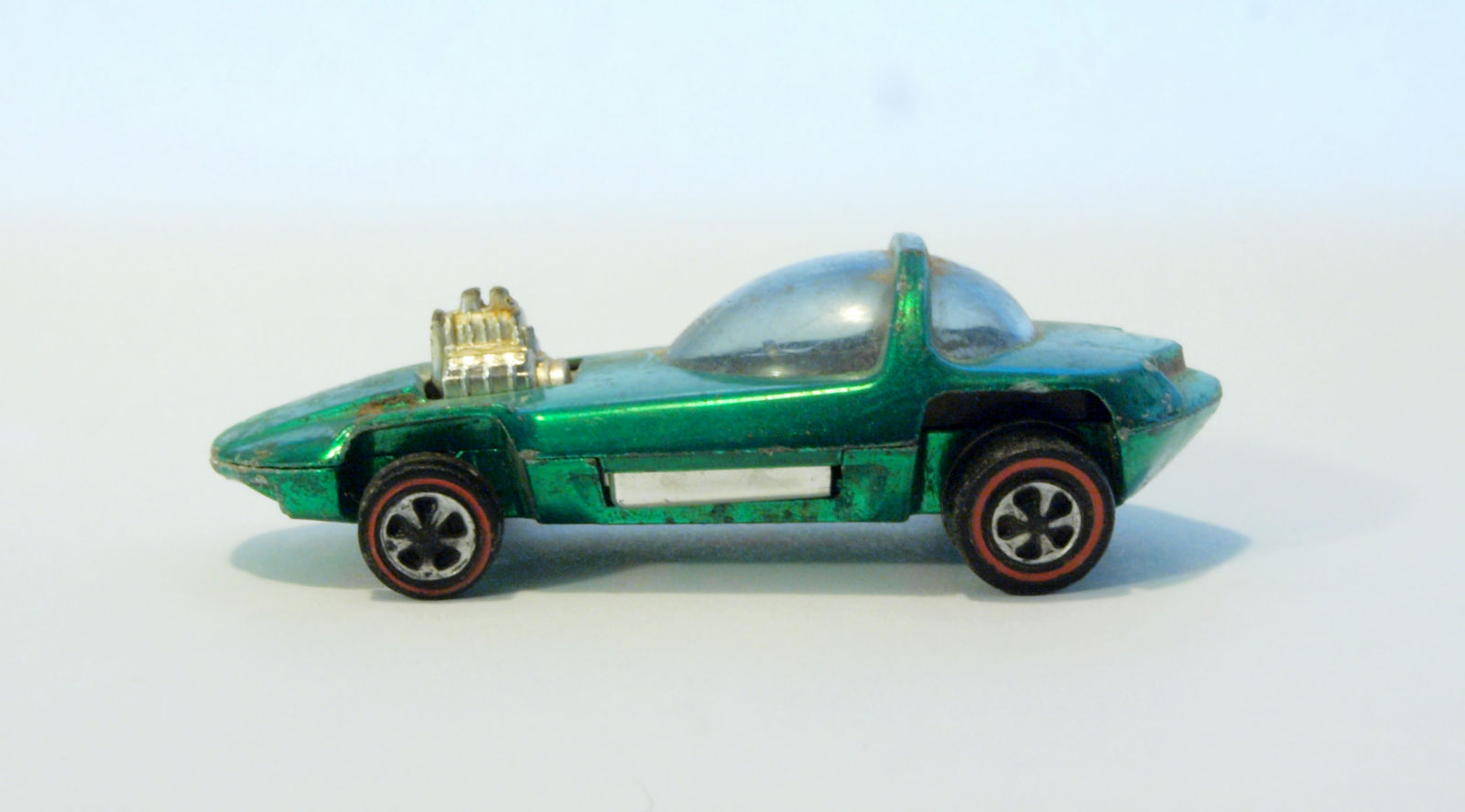
My 1968 Silhouette has kind of an extreme version of this under the A-pillar.
Also make sure you check out for signs of refurbishing as well. Some paint colors are worth much more than others. Also just basic knowledge of how the packaging has changed. Rarely, you can find an original still on its blister. These are obviously worth about double the loose one. Recently I found a post about a purple Olds 442 still on the blister. What they didn't recognize was that the blister was of a modern variety so that car itself was just reintroduced probably for the 25th or 30th anniversary of Hot Wheels. It's the little things that can make the difference (this guy wanted $300 for it...absurd, especially since if it was an original it would be worth at least 10 times that amount).
Alright, on to color variations. Currently we get one color variation per release period, but Hot Wheels nowadays tends to release variations within months, or even years of each other. Back in the day the colors would be released together in varying amounts of course.
I've found onlineredlineguide.com to be amazing at telling you which color variation was common, rare, or in between for its release. This also tells you how much the price can jump between variations.
Let's take a look back at the Olds 442. Here's what onlineredlineguide.com says about the color variations:
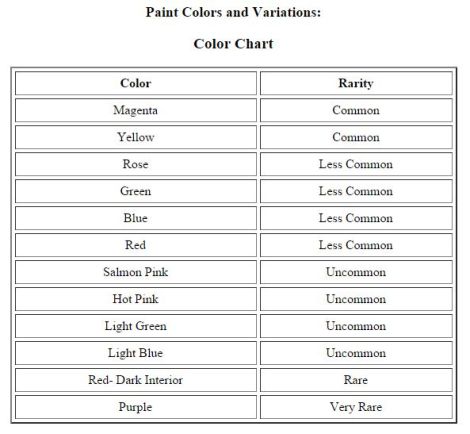
I hope you can see that... should be much bigger. Well now you can see why I was harping even more on that guy about the purple olds 442.
Now recently I was going through my collection and trying to place monetary values so that if I die, my fiancee doesn't just give everything up for a buck.
Well I came across this:
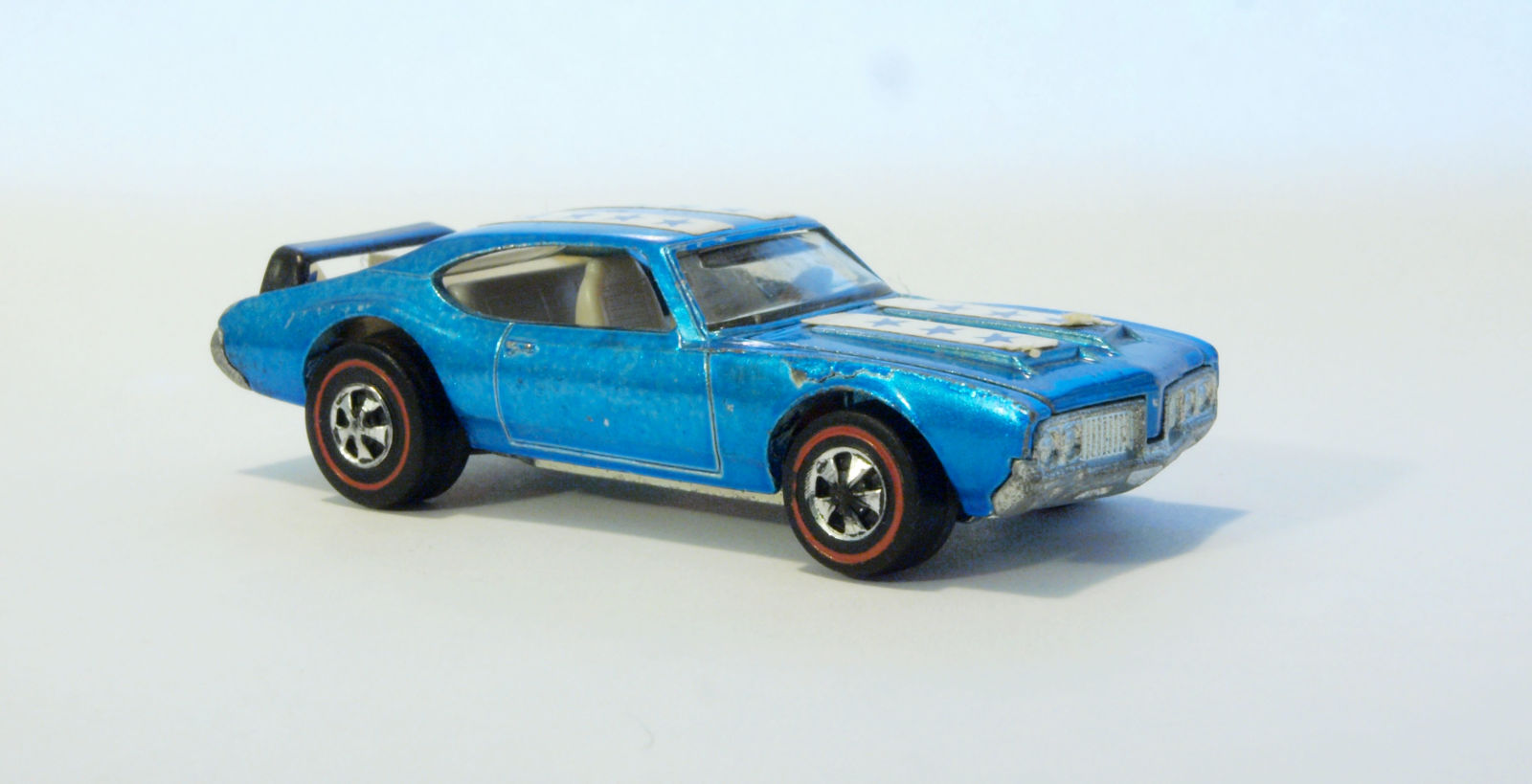
That's a light blue olds 442 is good shape with the original stickers still intact. As the image above it states, it's uncommon, for a car that was already produced in only 1 of the 2 potential spots Hot Wheels had at the time. As such, I've seen estimates for $1000. Yeah. Nuts. I had a mild panic attack at realizing this. This is why it's good to check out the color variations. The green Silhouette I showed above? Even with the being from the very first group of cars Hot Wheels ever made, maybe I could get $40 for it, probably less due its condition. Also to note is some of the original cars had decal sets that you could apply to the car. I am guessing having them still intact only adds to the value.
Another thing that increases the value of the originals is if you have the collector button with it. From what I've seen, this was mainly used for promotional things with Hot Wheels, like you could mail-in a photo of your pins and receive a car or something (again, this is way before photoshop, so it was an honest way to do things).

Here's my Red Baron with its pin.
This is also why I was so excited to score 20 pins all from 1968 to 1970 for only $10 on the EBays... they have arrived and are super legit. I'm stoked since I only had 2 pins to begin with.
Now obviously if you have an original still on the card, it will be worth MUCH more than one loose, but these guys are still going for quite a lot per car even for the common ones.
Alright, let's get back to the cars. Back when Hot Wheels came out, they released 16 cars in 1968. These are referred to as the "Sweet 16".
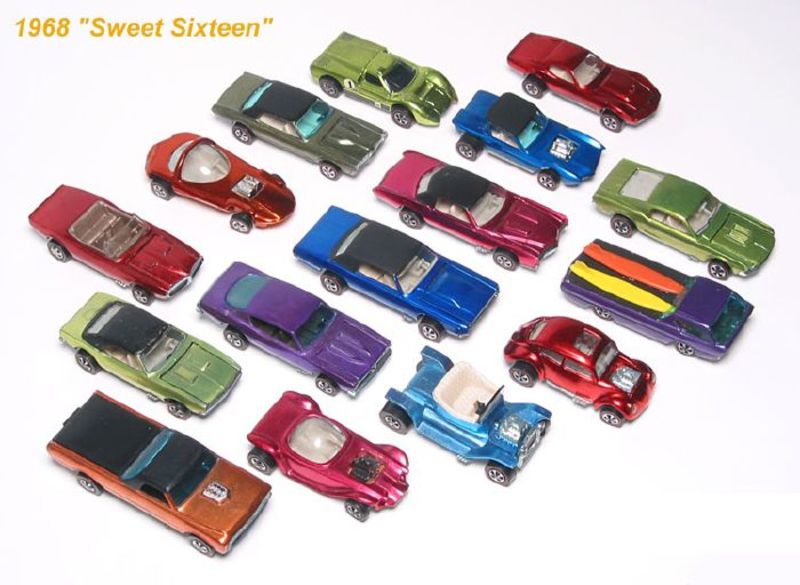
Courtesy of onlineredlineguide.com
As you can see, most of these are muscle cars and every one of them is a bright color. It's no surprise Hot Wheels took the world by storm. One of the other great parts about the originals is there was usually something special about each car, typically with it having an opening hood to look at the engine.
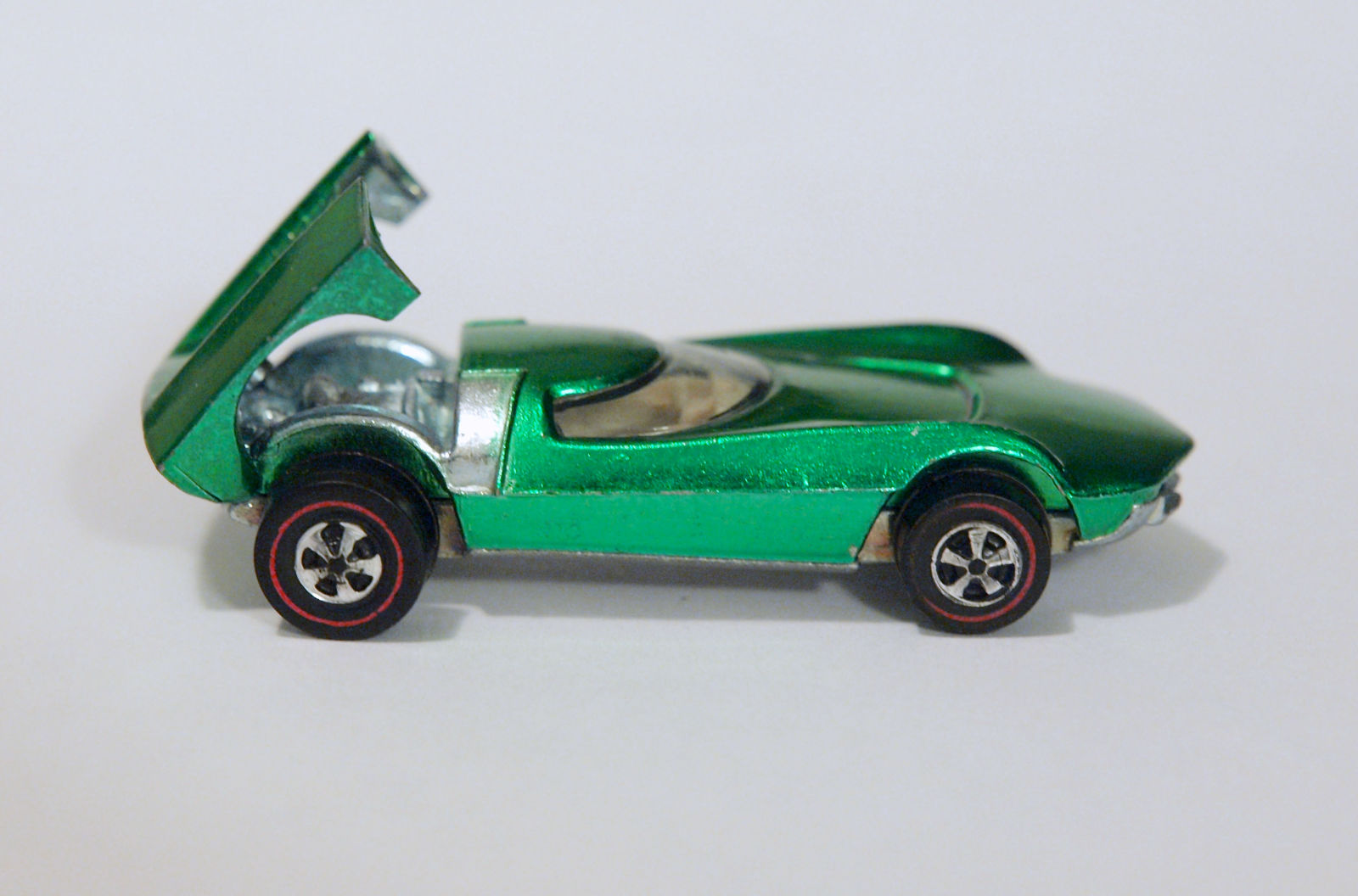
My '69 Turbofire with its clamshell rear-hood.
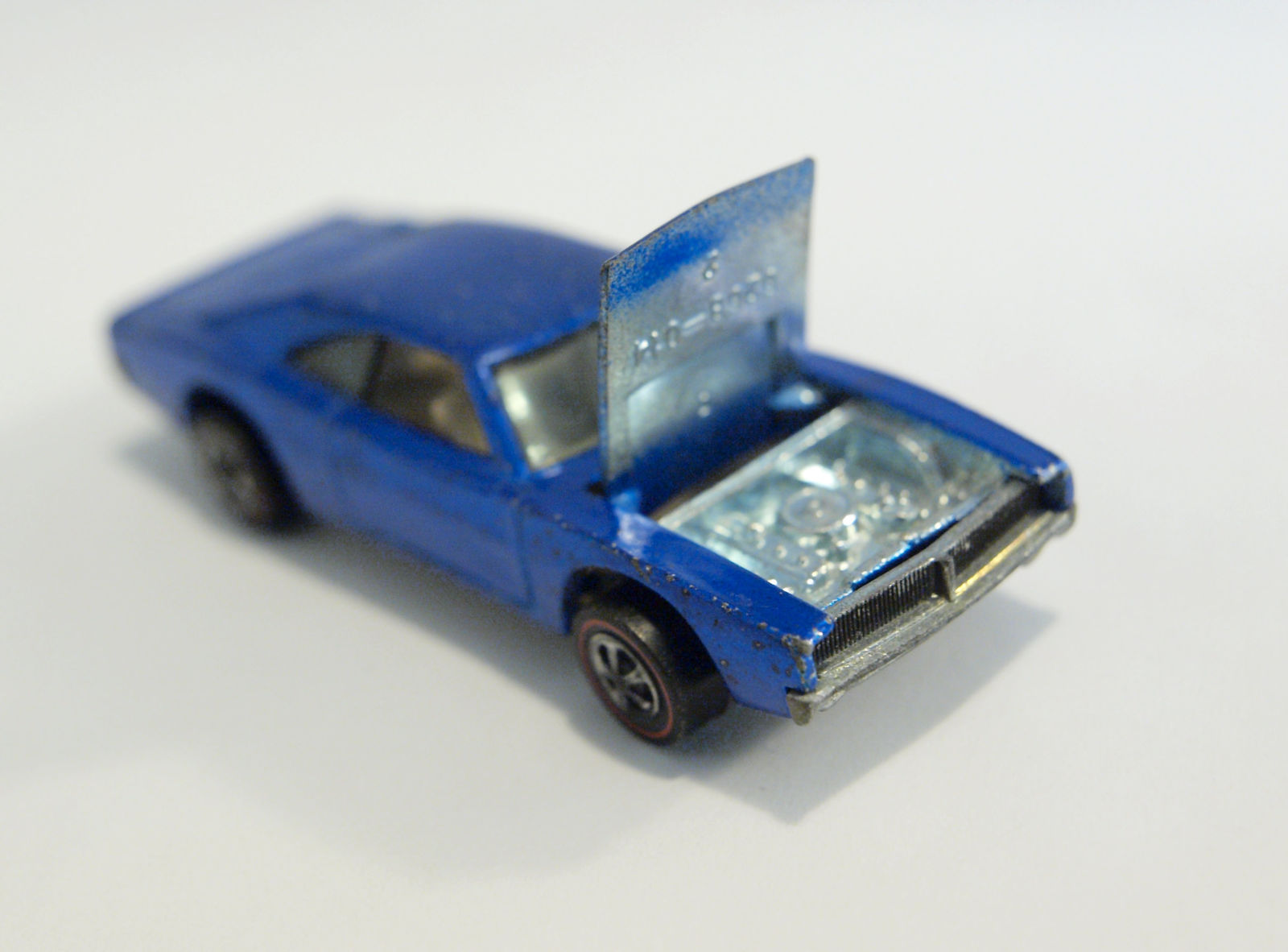
My '69 Custom Charger with its opened hood.
Now unfortunately 1972 was the last year for the original Spectraflame paint jobs because legislature had just passed that toys could not contain lead-based paint...due to poison and such. Well Mattel was using lead-paint in their lacquers for the spectraflame jobs, they had to rethink everything. As such, only 6 new models were released for 1972 as Mattel figured out what to do for the next year.
Come 1973, Mattel released their Hot Wheels with new enamel colors. They also renamed many of the models and changed their cards from the original flame-design to the more common rectangle design we see today (of course the artwork has changed over the years).
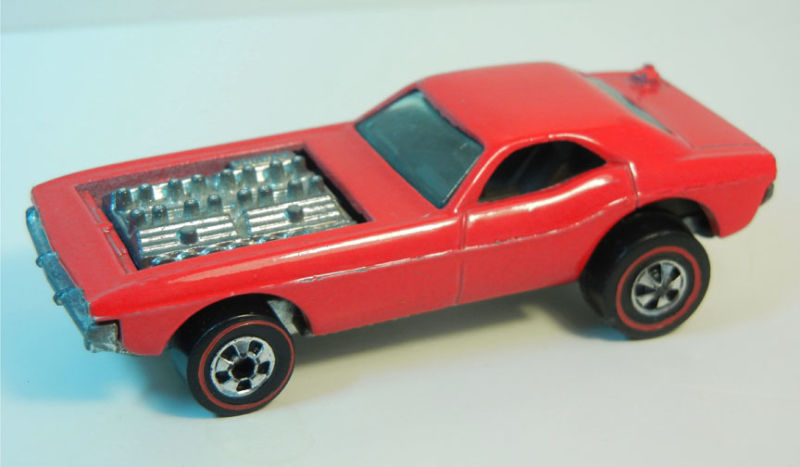
Show-Off courtesy of onlineredlineguide.com . Anyone see the resemblance to the Dixie Challenger? :D Also I dunno about you, but Mattel had a way to go to figure out better colors for their new line. It's almost a pastel color...yeesh.
Mattel continued on for some time until the redlines were no more. In 1977, hot wheels moved away from redlines and moved to the common blackwalls we see today. Not all was lost though, for they also released the real riders soon after, which our amazing customizers know and love.
Now besides the regular Hot Wheels we are fairly familiar with now, special lines were also released.
In 1970 the Heavyweights were released. These were basically all work vehicles...that had an eerily similar front-end (lazy work Hot Wheels....).
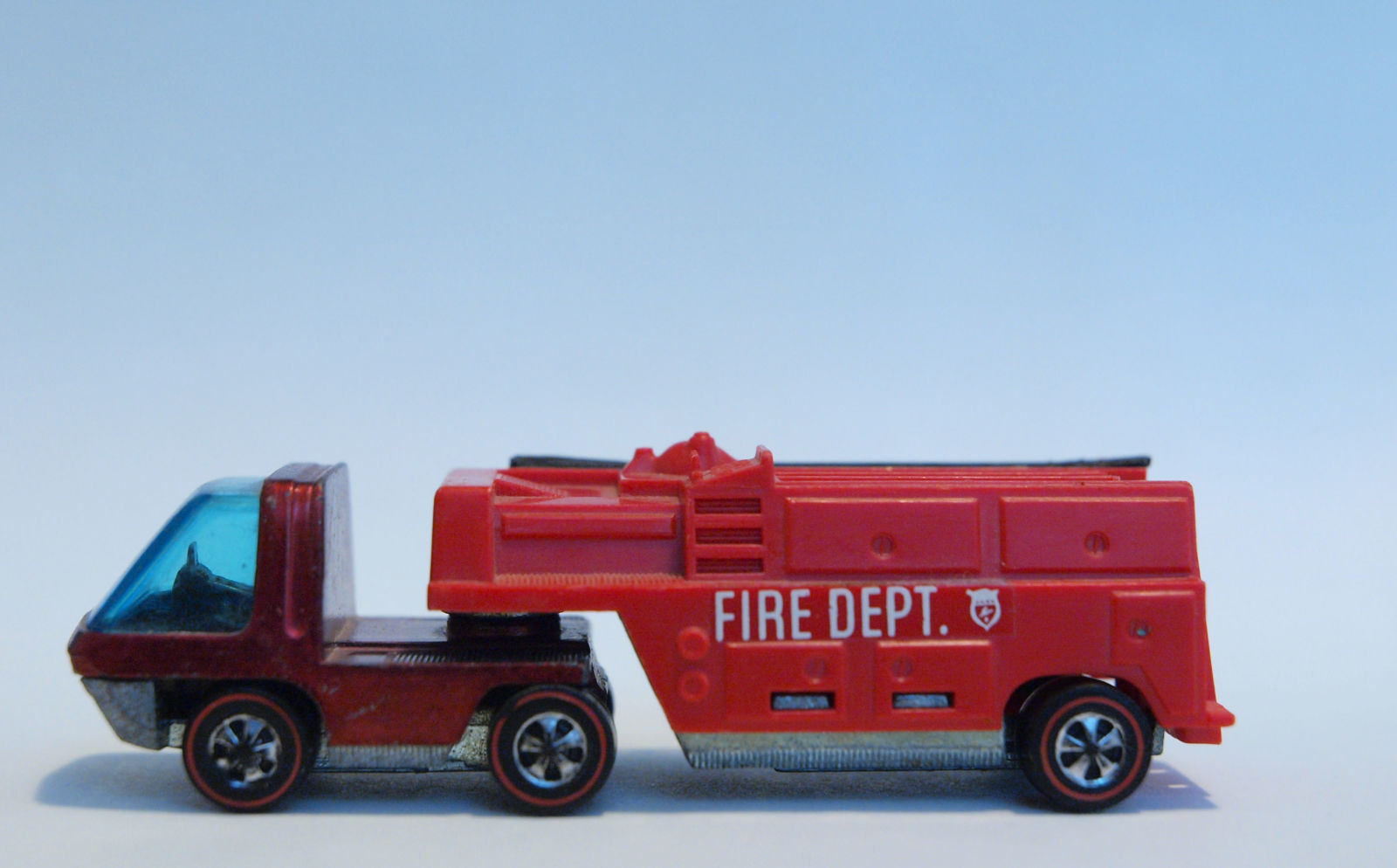
They also released the Sizzlers in 1970. These were electric cars that you could charge up and let em race! Pretty amazing if I say so for it being 1970.
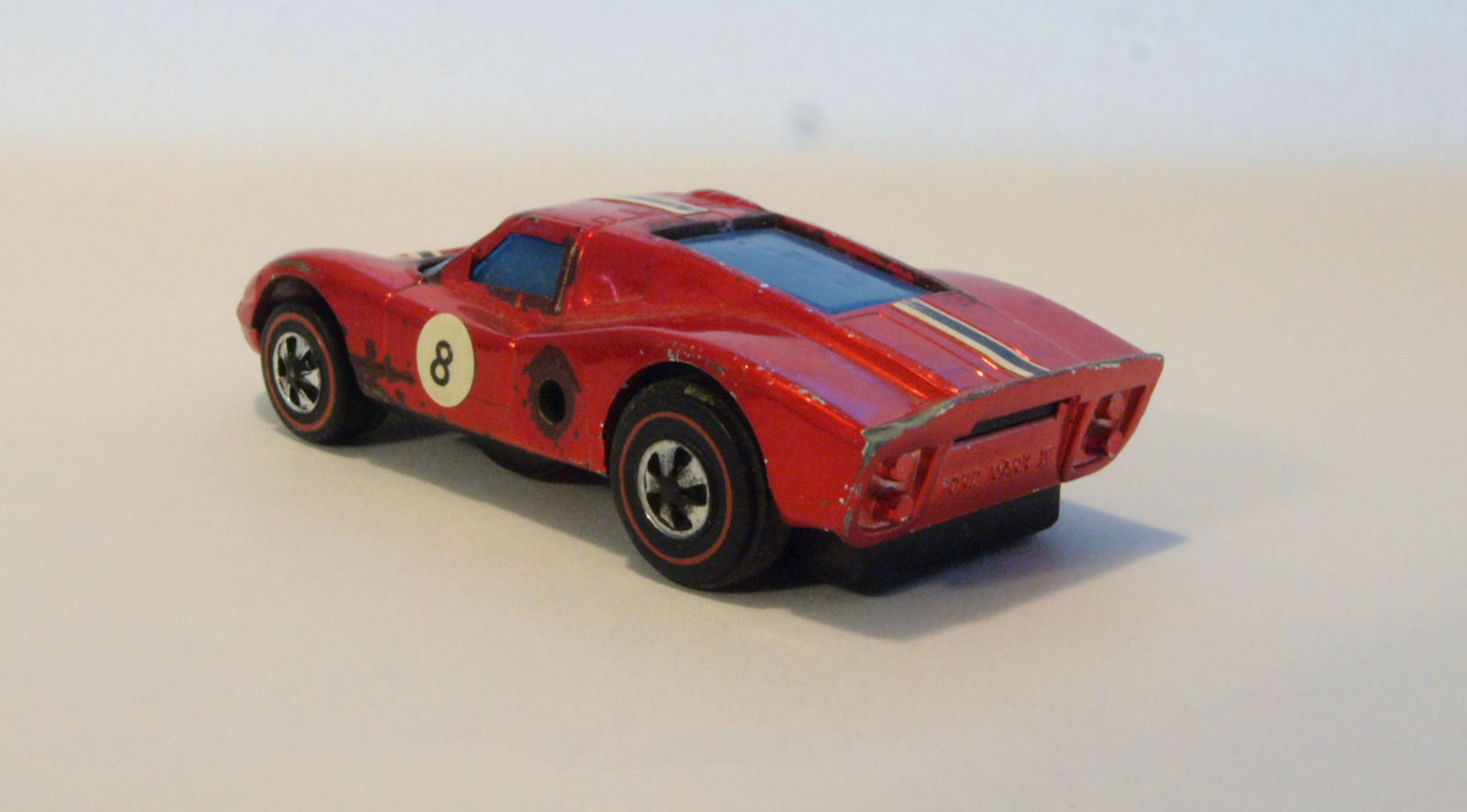
On the side of the Ford Mark IV you can see the whole for the charger. These also didn't have the metallic bodies and were made of plastic (I would assume due to electrical hazards).
They also released their first motorcycle series in 1971, called the Rrrumblers.
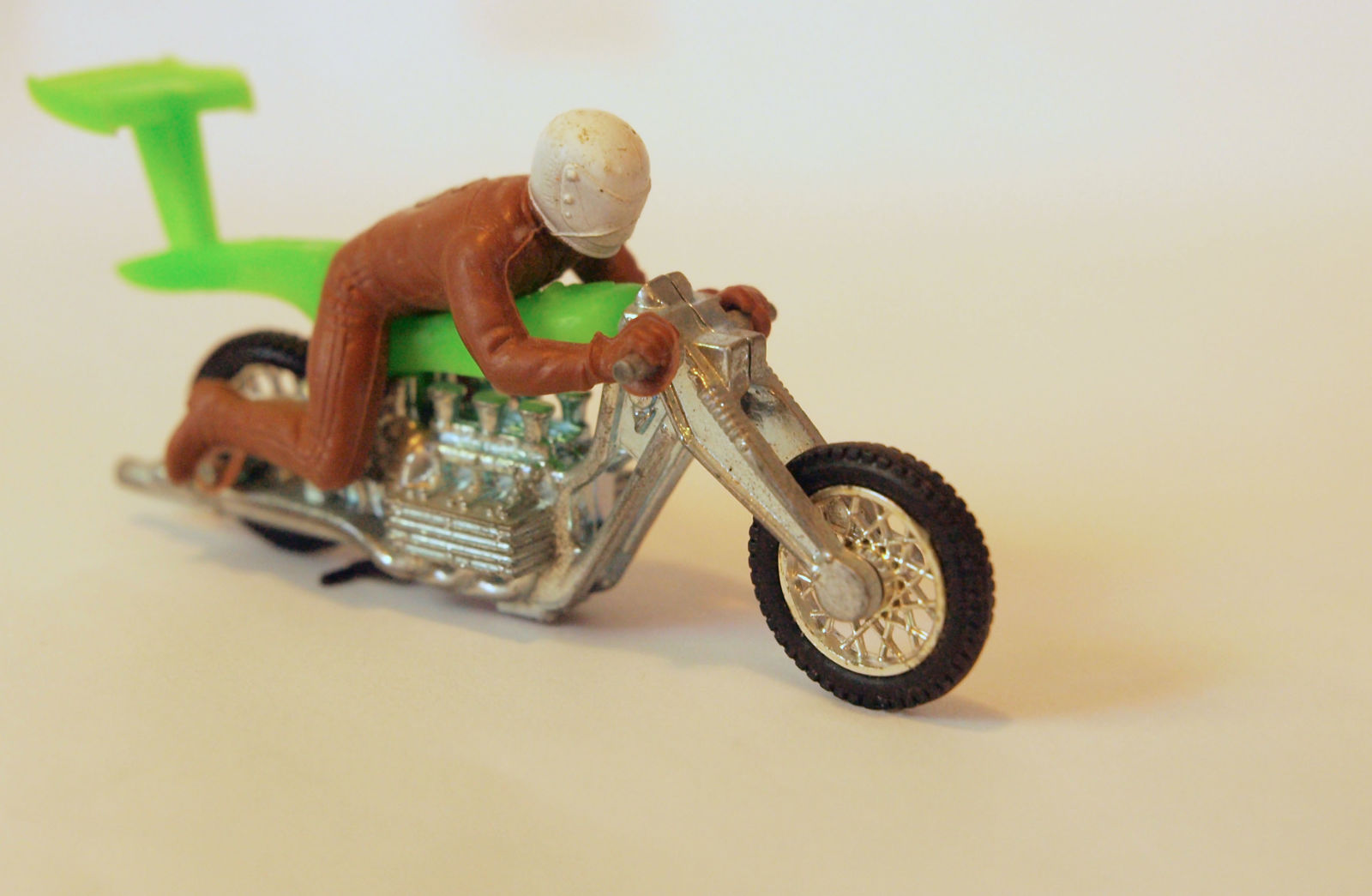
This is the High Tail, and yes all of the motorcycles came with interchangeable rubber racer guys!
All in all, Hot Wheels came in looking to take no prisoners and has never looked back since.
If you want to really go in-depth check out onlineredlineguide.com, they tend to have more information about each model. Texas diecast also tends to have price-guides as well. Otherwise there is a plethora of reading material out there, I intend on receiving some for christmas before my redline collection really gets going :D
Hope you enjoyed the read!
